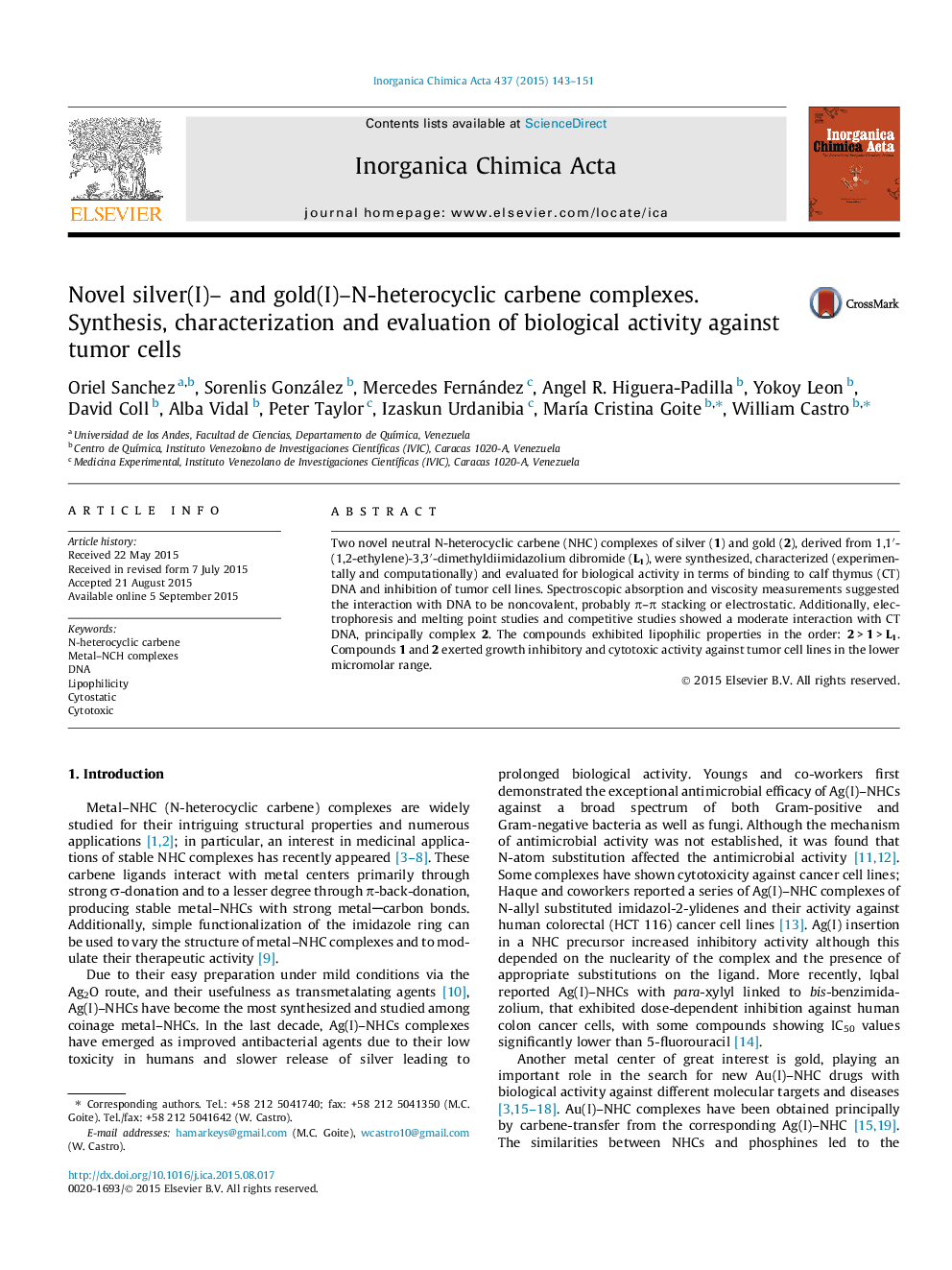| Article ID | Journal | Published Year | Pages | File Type |
|---|---|---|---|---|
| 1308801 | Inorganica Chimica Acta | 2015 | 9 Pages |
•Ag2(μ-κ2C,C′-C10H14N4)Br2 and Au2(μ-κ2C,C′-C10H14N4)Cl2 have been synthesized and characterized.•Interactions of complexes with calf thymus CT-DNA have been verified.•The gold complex is more lipophilic than the silver complex.•Au2(μ-κ2C,C′-C10H14N4)Cl2 shows good biological activity against PC3 and HT29 tumor cell lines.
Two novel neutral N-heterocyclic carbene (NHC) complexes of silver (1) and gold (2), derived from 1,1′-(1,2-ethylene)-3,3′-dimethyldiimidazolium dibromide (L1), were synthesized, characterized (experimentally and computationally) and evaluated for biological activity in terms of binding to calf thymus (CT) DNA and inhibition of tumor cell lines. Spectroscopic absorption and viscosity measurements suggested the interaction with DNA to be noncovalent, probably π–π stacking or electrostatic. Additionally, electrophoresis and melting point studies and competitive studies showed a moderate interaction with CT DNA, principally complex 2. The compounds exhibited lipophilic properties in the order: 2 > 1 > L1. Compounds 1 and 2 exerted growth inhibitory and cytotoxic activity against tumor cell lines in the lower micromolar range.
Graphical abstractN-heterocyclic carbene complexes of Ag(I) and Au(I); structural characterization. In vitro cytotoxicity (IC50) against six tumor cell lines.Figure optionsDownload full-size imageDownload as PowerPoint slide
